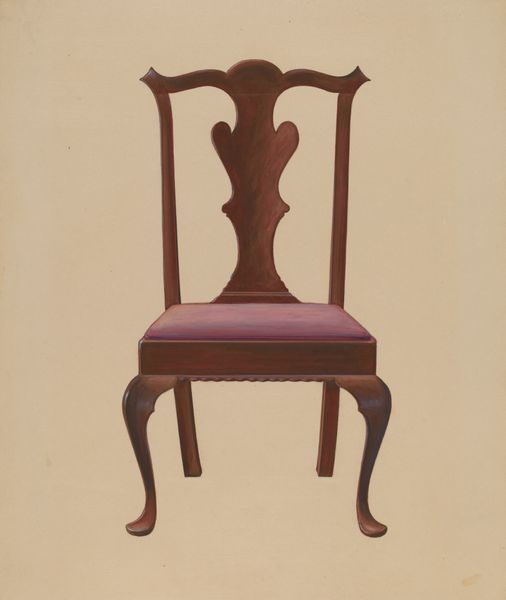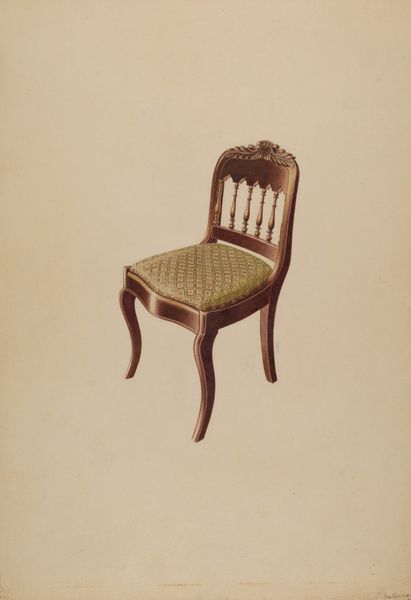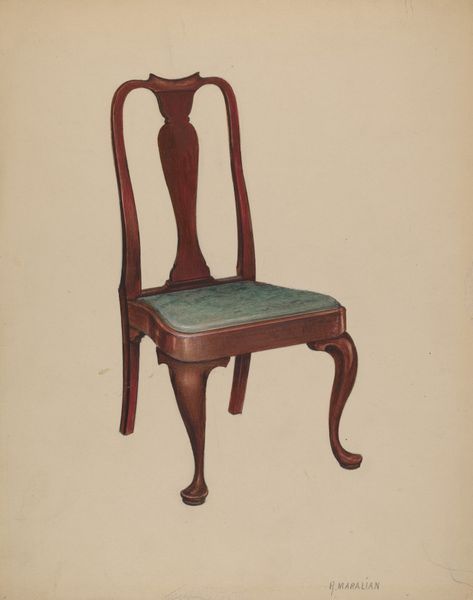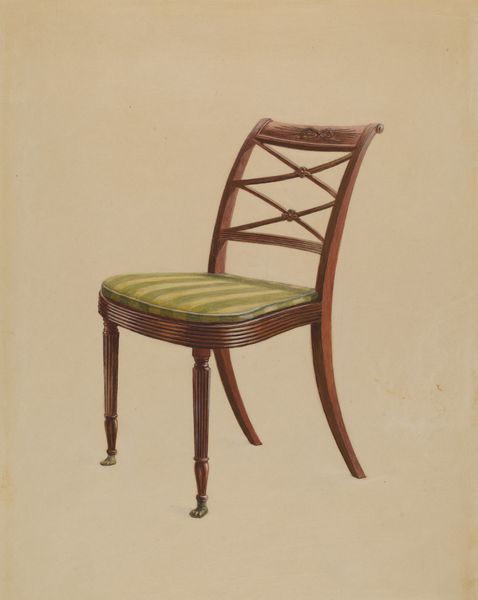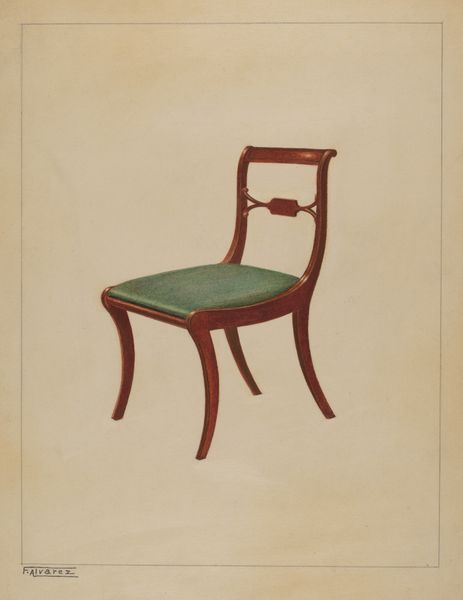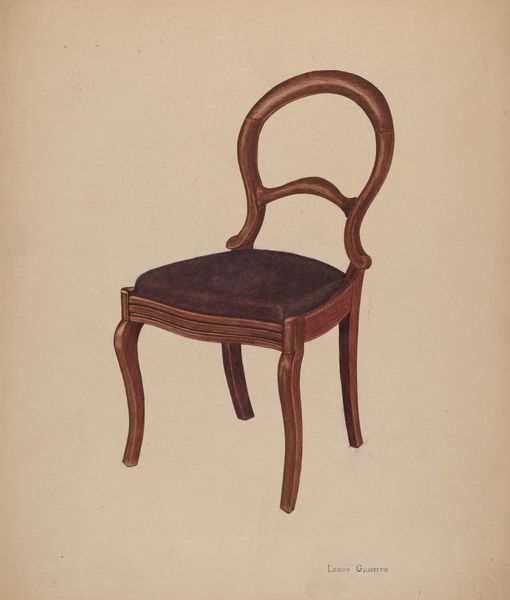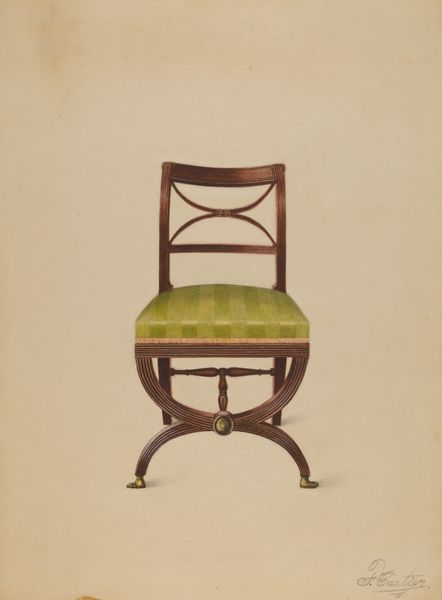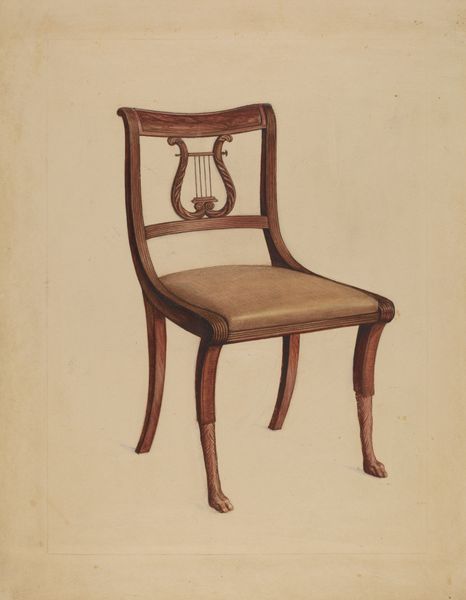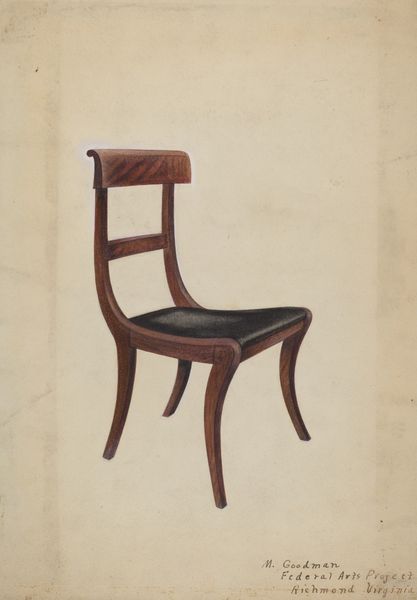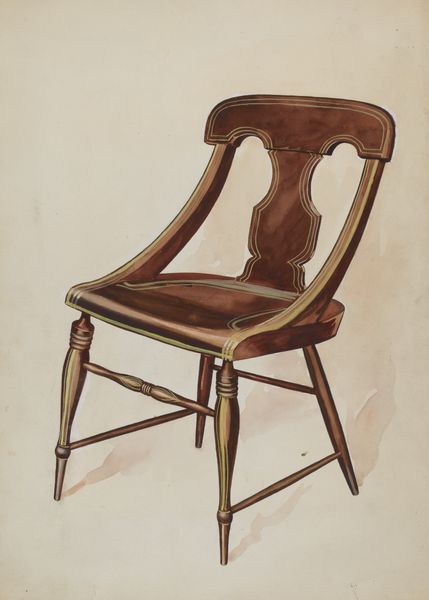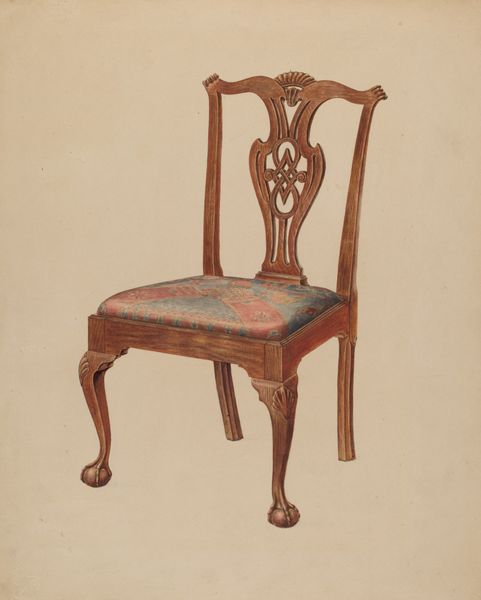
drawing, oil-paint, paper, pencil, wood
#
drawing
#
oil-paint
#
paper
#
pencil
#
wood
#
academic-art
Dimensions: overall: 29.8 x 22.7 cm (11 3/4 x 8 15/16 in.) Original IAD Object: none given
Copyright: National Gallery of Art: CC0 1.0
Curator: This image presents us with Frank Wenger’s "Side Chair," dating from 1936. It combines drawing, oil paint, and pencil on paper to represent a design presumably meant for wooden execution. My immediate thought goes to the intersection of design and representation in this piece. Editor: It projects a strange feeling of antiquated formality—almost frozen in time. The solitary chair, centered and stark against the plain backdrop, lends itself to a dreamlike, unreal scene despite being of mundane subject matter. The colour palette is dominated by wooden brown, complimented with green upholstery and contrasted against a pale, sandy ground. It evokes an eerie, timeless aura. Curator: Absolutely, that contrast between the idealized representation and its functional origins is quite telling. Chairs, throughout history, have been powerful signifiers of status, ceremony, and social hierarchy, going back to thrones in Ancient Egypt. Editor: It’s also the precise moment it was made that fascinates me. In the middle of the Great Depression, such design was a display of hope amid widespread suffering. It points to an enduring need for visual order and comforting familiarity amid anxieties of the time. I imagine it speaking to notions of a stable home in unstable times. Curator: Right, Wenger might be intentionally invoking a historical lineage of furniture design as a means to anchor people, or to propose aspirational goals. Think about the psychological comfort derived from those familiar curves and lines; these aren't jarring Modernist angles but rather softened contours offering some semblance of order. Editor: Yes, and academic art like this serves a pedagogical role too, establishing canons of taste within institutions like schools, museums, and world’s fairs. This rendering not only communicates design specifications but implicitly communicates which traditions the designer values. What strikes me, actually, is how alone the chair seems. Was the artist perhaps alluding to lost furniture craft? Curator: Could be. Solitary objects frequently take on potent symbolic weights precisely because they're isolated. Here, this single chair prompts considerations of absence, use, and history all bound together. Its presentation suggests an attempt to immortalize common and traditional ideals within domestic life. Editor: That certainly gives me something to reflect on concerning cultural persistence. Thanks for highlighting Wenger’s choices for me. Curator: It was my pleasure. I found these aspects surrounding utility and symbol invaluable.
Comments
No comments
Be the first to comment and join the conversation on the ultimate creative platform.
